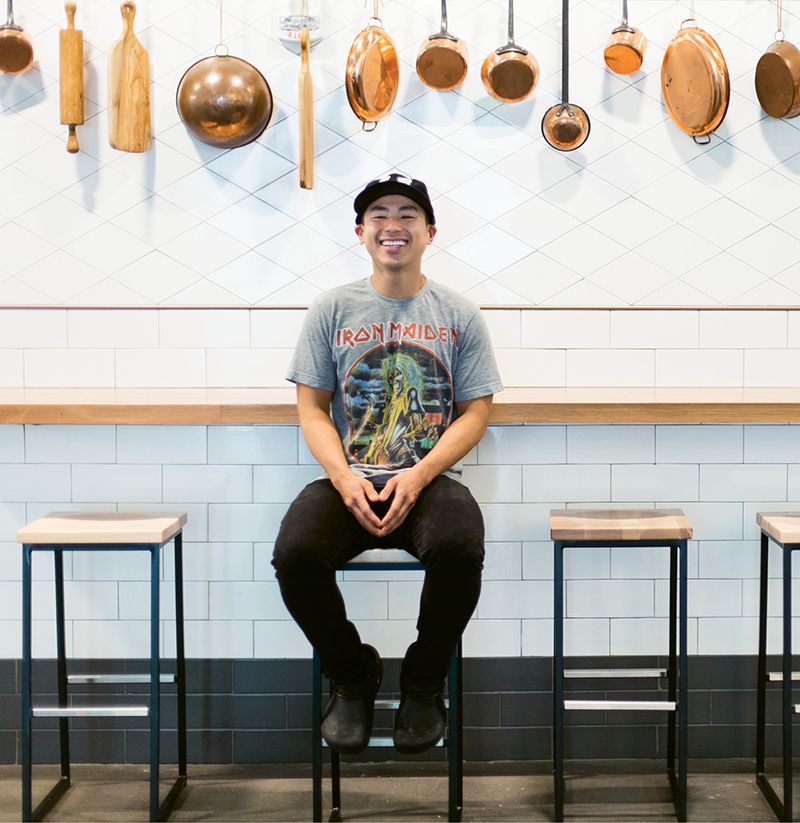From slinging bánh mìs from a food-truck window to serving up Vietnamese dishes in Workshop, the Pink Bellies owner talks to us about staying true to his roots

CM: What got you interested in cooking?
TP: Food has always been on my mind. We lived in San Francisco when I was growing up, and there was so much Asian culture and cuisine around me. I’d eat with my siblings at an ethnic place every day after class. My parents, who are from Vietnam, often took us overseas to see family, and the visits were centered on food.
CM: Did you miss that moving here?
TP: Definitely. My family moved to South Carolina when I was seven, and it was very strange: I had so many diverse food options one week, then none the next! I really appreciated the Asian rice dishes and soups I ate as a kid even more, because I couldn’t find them here.
CM: Is that why you decided to serve it up yourself?
TP: After I graduated from College of Charleston’s business school in 2012, I couldn’t stop thinking about the home-cooked dishes my Vietnamese family makes, and I wanted to share that with everybody here. So I got a bunch of friends together and we opened our food truck.
CM: This year, you moved into Workshop. How do you like your new digs?
TP: It’s been awesome to be more accessible. But I do think it’s harder to connect with diners here than in the food truck, because we’re not working right at the window and chatting while we cook—I miss that relationship. I try little things to get closer to people. We recently moved our sandwich prep station up next to the register to close the distance a bit. I love talking about what goes into our dishes while I prepare them.
CM: What’s your take on Charleston’s Asian food scene today?
TP: In some ways, I think it’s improved over the years, because more chefs are featuring Asian components on their menus. But I often see misrepresentations of traditional dishes; maybe certain ingredients are used incorrectly. And that’s unfortunate, because this may be the first time people have tried these types of Asian food, and they’re not getting the real thing.
CM: So you’re saying that you’d like to see more authenticity?
TP: Ah, authenticity is such a loaded word! What I’d like is more ethnic ties in the restaurant industry. I want to eat somewhere knowing that the chefs are coming from a place where they’ve had this food. Maybe they had the dish in their grandma’s kitchen; maybe their mother-in-law used to cook it, and they really connected with it.
CM: What are some telltale ingredients you look for at a genuine place?
TP: Whenever you go to legit Vietnamese restaurants, they always have yellow mayonnaise, which is colored that way because it’s made with limes instead of vinegar. I also look for green onion stems (the white part), which have a really robust flavor. If I ever get a bowl of soup and there’s that stem floating in it, I feel like someone’s mom cooked it for me. That’s the good part that they’ll always put in their dishes.
CM: What’s on the menu at home?
TP: We do a traditional sweet and sour soup called canh chua, which has pineapple and tomato. And anything super salty that can counter white rice, like in our rice bowls at Pink Bellies.
CM: Any Thanksgiving traditions?
TP: In the past four years, my parents, siblings, and I have started to cook turkeys, but before that, we would just make pho. I crave soup when the weather turns.
Photographs By (Thai Phi & Bridge) Taylor Drake & (Short Grain) Ruta Elvikyte